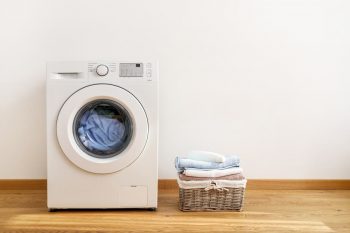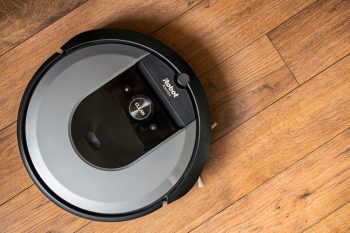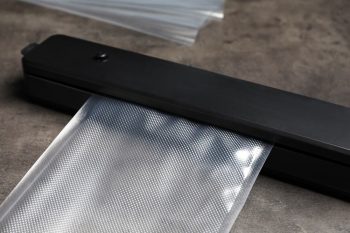
Maintaining the crispness of food, especially when stored in the fridge, can be a tricky task. Whether it’s your leftover pizza or fried chicken, no one likes to bite into a piece of soggy food. But how can you ensure that your food remains crispy even after being stored in the fridge for a couple of days?
To keep food crispy in the fridge, ensure that your refrigerator’s temperature is between 34°F and 40°F and manage the humidity levels depending on the type of food. Store food in airtight containers or wrap them in dish towels to maintain crispness. Use crisper drawers for high-humidity foods like leafy vegetables. Separate ethylene-producing fruits from other produce. For fried foods, store them in an airtight container with a paper towel to absorb moisture and reheat in the oven to restore crispiness. Avoid common mistakes like storing food uncovered or overcrowding the fridge.
Understanding the Factors That Affect Crispness
The crispness of food in the fridge is affected by several key factors:
- Temperature: The ideal temperature for a refrigerator is between 34°F and 40°F. This temperature range helps slow down the growth of microorganisms and the activity of natural enzymes, preserving the freshness of the food.
- Humidity: The humidity level in the fridge plays a vital role in maintaining the crispness of food. High humidity helps keep vegetables crisp, moist, and fresh for a longer period of time. Humidity drawers or crispers in the fridge are designed to maintain a higher humidity level than the rest of the refrigerator.
- Airflow: Proper airflow is essential for maintaining the freshness of fruits and vegetables.
- Storage method: The way food is stored in the fridge can also impact its crispness. For example, wrapping certain vegetables in a dish towel before placing them in the fridge helps them stay crisp, as long as the produce is packed loosely enough to breathe. Storing food in airtight containers can also help maintain crispness by keeping moisture out.
- Ethylene production: Some fruits release ethylene gas as they ripen, which can affect other produce stored nearby. To maintain crispness, it’s essential to separate ethylene-producing fruits from other fruits and vegetables.
By controlling these factors, you can help maintain the crispness of food stored in the fridge.
Ideal Temperature and Humidity Levels
Temperature and humidity levels in a fridge play a crucial role in maintaining the freshness and crispness of food. The ideal refrigerator temperature is between 37°F and 40°F, as it helps extend the freshness of groceries and prevents the growth of bacteria. Humidity levels also affect the freshness of fruits and vegetables.
Crisper drawers in a fridge are designed to provide a more humid environment, which helps keep some fruits and vegetables fresh for longer.
Different fruits and vegetables have different humidity requirements. For example, zucchini and green beans prefer a warmer environment with higher humidity, while peaches and pears prefer a colder one with lower humidity.
High-humidity drawers are optimal for maintaining the crispness of leafy vegetables like lettuce, spinach, and kale. On the other hand, fruits and vegetables that are sensitive to ethylene gas, like strawberries, should be kept in a high-humidity drawer to prolong their freshness.
Proper Storage for Crispness
Some food items can retain their crispness when stored in the fridge, but it’s essential to store them properly. Here are a few examples of food items that can stay crispy and the methods to store them:
- Lettuces and leafy greens: Store them in the crisper drawer, which offers a more humid environment than the rest of the refrigerator. You can also wrap them in a slightly damp paper towel and place them in a plastic bag with small air holes.
- Celery: Store it in the bag it came in, with a couple of small air holes, in the refrigerator’s vegetable drawer.
- Asparagus: Store it in a mason jar or similar, with a couple of inches of water inside. Cover the top with a produce bag, if you have it, and store it in the door of the refrigerator if possible.
- Fried foods: Although fried foods tend to lose their crispness when stored in the fridge, you can still store them in an airtight container with a paper towel to absorb moisture. To reheat and restore crispiness, use an oven instead of a microwave.
Packaging and Placement
Proper packaging and placement of food inside the fridge contribute to its crispness by maintaining the appropriate temperature and humidity levels for different types of food.
Crisper drawers, also known as humidity drawers, are designed to control the airflow around the stored produce, allowing you to adjust the humidity levels to suit the specific needs of the items stored inside.
To maintain the crispness of food, it is essential to keep the refrigerator temperature at or below 40°F (4°C) and ensure proper air circulation within the fridge. The upper shelves of the fridge have the most consistent temperatures, making them suitable for storing foods that do not need cooking. It is also crucial not to overcrowd the shelves, as cold air needs to flow freely to maintain consistent temperatures.
Avoid Common Mistakes
Avoid these common mistakes that lead to losing the crispness of food in the fridge:
- Storing produce in its original packaging: Some packaging materials may not be suitable for maintaining the freshness of the produce in the fridge.
- Washing produce preemptively: Washing fruits and vegetables before storing them in the fridge can cause them to become soggy due to the excess moisture.
- Pairing foods that are wrong for each other: Certain fruits and vegetables release ethylene gas, which can cause other produce to ripen or wilt faster. It’s essential to separate ethylene-producing items from ethylene-sensitive ones.
- Storing fried foods in the fridge: The refrigerator’s humid environment can cause fried foods to absorb moisture and become soggy. It’s better to store fried foods in the freezer, where the environment is drier.
- Storing food uncovered: Uncovered food can dry out quickly and absorb fridge odors, affecting its taste and texture.
- Piling food and containers on top of each other: This can prevent proper cooling and air circulation, leading to food spoilage and loss of crispness.
By following these guidelines and understanding the factors that affect the crispness of food in the fridge, you can enjoy fresh, crispy food for longer.
Frequently Asked Questions
** How long can I keep my food in the fridge before it loses its crispness? **
** The time that food can stay crisp in the fridge varies depending on the type of food and how it’s stored. Generally, vegetables can stay crisp for one to two weeks if stored properly, while fried foods can lose their crispness within a day or two.
**
** Can I use a vacuum sealer to keep my food crispy in the fridge? **
** A vacuum sealer can help extend the shelf life of food by removing air, which slows down the oxidation process. However, it may not be the best option for preserving crispness, especially for fried foods, as vacuum sealing can sometimes create a moist environment that may make food soggy.
**
** What is the best way to reheat fried foods to restore their crispness? **
** The best way to reheat fried foods and restore their crispness is by using an oven or a toaster oven. Microwaving can make fried foods soggy, but reheating them in an oven can help restore their original texture.
**
** Can I use rice to keep my food crispy in the fridge? **
** Rice is a well-known desiccant that absorbs moisture, and it’s often used to keep salt and other dry goods from clumping. However, it’s not a practical solution for keeping food crispy in the fridge because it can’t absorb the moisture from the food without direct contact.
**
** Are there any specific types of containers that are best for keeping food crispy in the fridge? **
** Airtight containers are the best for keeping food crispy in the fridge. They help keep moisture out, which can prevent food from becoming soggy. Glass containers are often recommended as they don’t absorb odors and are easy to clean.












